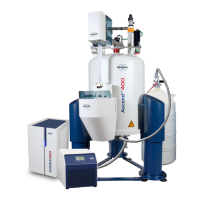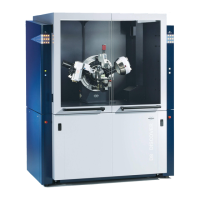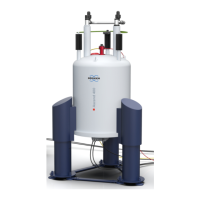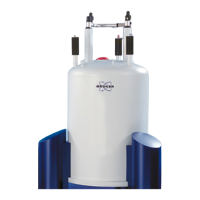System Description
30 / 86 H171804E_14_001
4.7 Probes
The probe is designed to hold the sample, transmit radio frequency signals which excite the
sample and receive the emitted response. The transmission and reception is achieved by
using specially designed RF coils.
The probe is inserted into the bottom of the magnet and sits inside the room temperature
shims. Coaxial cables carry the excitation signals from the console amplifiers to the probe
and the NMR signal back from the sample to the receiver. The cables are routed through a
set of preamplifiers (the HPPR) which are situated next to the base of the magnet or on
NanoBay systems are built in to the console. The preamplifiers are needed to boost the
NMR signals which are typically very weak.
Figure4.5: Sample in Probe
1 Sample Volume 3 Coils
2 Probe
Probes come in different sizes and types. The size of the probe is given in terms of the
sample tube sizes it can hold, with 5mm and 10mm sample tube diameters the most popular.
Different types of probes are used depending upon the type of experiment. Selective probes
are specially designed to observe specific nuclei, e.g. 13C, while multinuclear (X-BB or
broadband) probes may be used to analyze a wide range of nuclei. The number and design
of the internal coils are what physically distinguishes one type of probe from another. In
addition, the outer diameter and length of the probe is built to the specifications of the various
magnets (wide bore or standard bore; different length from the bottom to the center of the
magnetic field for magnets with different field strength).

